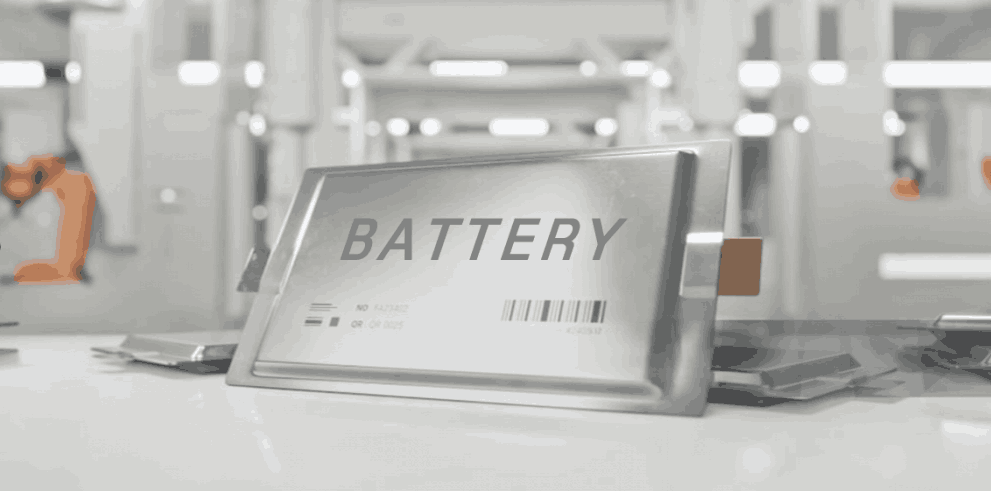A Lithium Polymer (LiPo) battery is a rechargeable lithium battery best known for its flexible aluminum-plastic pouch casing and semi-solid polymer electrolyte. Unlike traditional batteries with rigid metal housings, LiPo batteries are like "energy pouches"—they can be made ultra-thin and molded into various shapes. They're commonly used in smartphones, drones, and other lightweight electronic devices.

Positive and Negative Electrode Sheets
The positive electrode is the "warehouse" for lithium ions—typically lithium cobalt oxide or lithium iron phosphate. The negative electrode, usually graphite, stores and releases lithium ions.
Polymer Separator
Think of it like a breathable cling film—it lets lithium ions pass through while blocking electrons to prevent short circuits.
Tabs (Terminals)
These are the battery's "wire interfaces." The positive tab is usually a silver-colored aluminum strip, and the negative tab is nickel—used for connecting to external circuits.
Aluminum-Plastic Pouch Film
A three-layer protective film (nylon + aluminum + polyethylene) that's waterproof, leak-proof, and bendable without deforming.
Nominal Voltage: Commonly 3.7V. Fully charged it's about 4.2V; the cut-off voltage for discharge is around 3.0V (refer to battery datasheet). Discharging below this may cause irreversible damage.
Storage Voltage: If unused for over a month, keep the State of Charge (SOC) around 50% for storage—roughly 3.7V to 3.85V (check manufacturer's recommendation).
Safety Tips: Never charge over 4.2V – could cause swelling, thermal runaway, or even fire/explosion. Never discharge below 3.0V – it shortens battery life significantly.
Advantages
Lightweight, Thin, and Flexible: About 40% lighter than equivalent 18650 batteries; thickness can go as low as 0.5mm—thin as a credit card.
Higher Capacity, Longer Battery Life: Stores 10–15% more energy than similar-sized batteries—drones can fly longer.
Fast Charging: Supports 2C charging—up to 80% in 30 minutes. Great when you're in a hurry.
Disadvantages
Lots of Fakes: Counterfeits or low-quality cells often swell or fail quickly. Always choose reputable brands.
No Standardized Size: Comes in many shapes and sizes—measure before buying or consult the manufacturer.
Phones/Tablets: For ultra-thin, long-lasting devices.
Drones/RC Cars: High-discharge LiPo batteries provide strong bursts of current.
Smartwatches/Fitness Bands: Slim, wrist-friendly designs.
Power Banks: Lighter to carry around.
Capacity (mAh): The higher the number, the longer it lasts. A 2000mAh battery holds twice the energy of a 1000mAh one.
Discharge Rate (C Rating): Drones: choose ≥25C; Regular devices: 10C is sufficient; Higher C = stronger power, but also more expensive.
Size/Shape: Measure your battery bay's length, width, and thickness. Custom-fit options maximize internal space usage.
Avoid Full Charge Cycles
For daily use, avoid charging to 100%. 80–90% SOC is ideal for longevity.
Avoid Heat
Don't leave the battery in hot cars. If it feels hot while charging, pause and let it cool down.
Storage Tips
Charge to around 3.8V, seal in a plastic bag, and store in a cool place. Recharge every 3 months.
Comparison Table
| Aspect | Genuine LiPo Battery | Counterfeit Battery |
|---|---|---|
| Tab Material | Positive: Aluminum (silver) / Negative: Nickel (white) | Both tabs made of Copper (reddish) |
| Weight | 40% lighter than 18650 at same capacity | Same or heavier than 18650 |
| Charging Behavior | 2C charge: 30 mins to 80%, no overheating | Heats up in 10 mins, voltage fluctuates |
| Labeling | Clear voltage/capacity/approval marks | Blurry, lacks manufacturer info or faked specs |
Identification Steps
Check Tab Color & Welding Quality: Genuine tabs: clean aluminum/nickel, smooth welds; Fakes: reddish copper tabs, poorly welded with burrs or irregular joints.
Voltage Stability Test: Fully charge the battery, then let it sit for 1 hour. Genuine: voltage ≥4.1V; Fake: voltage drops sharply below 3.9V.
Custom Shapes Available
Whether your device requires square, round, curved, ultra-thin, or odd-sized batteries, Yilai can design to fit. Improves internal space utilization by up to 30%.
Guaranteed Safety & Reliability
Every Yilai battery undergoes rigorous testing: short circuit, compression, puncture, drop, overcharge/discharge protection. Certified to meet UN38.3, CE, RoHS standards—ensuring safe use.
Quick Response to Orders
7-day prototyping, 21-day mass production. From micro batteries (as small as 100mAh for wearables) to large drone packs—Yilai has dependable solutions.